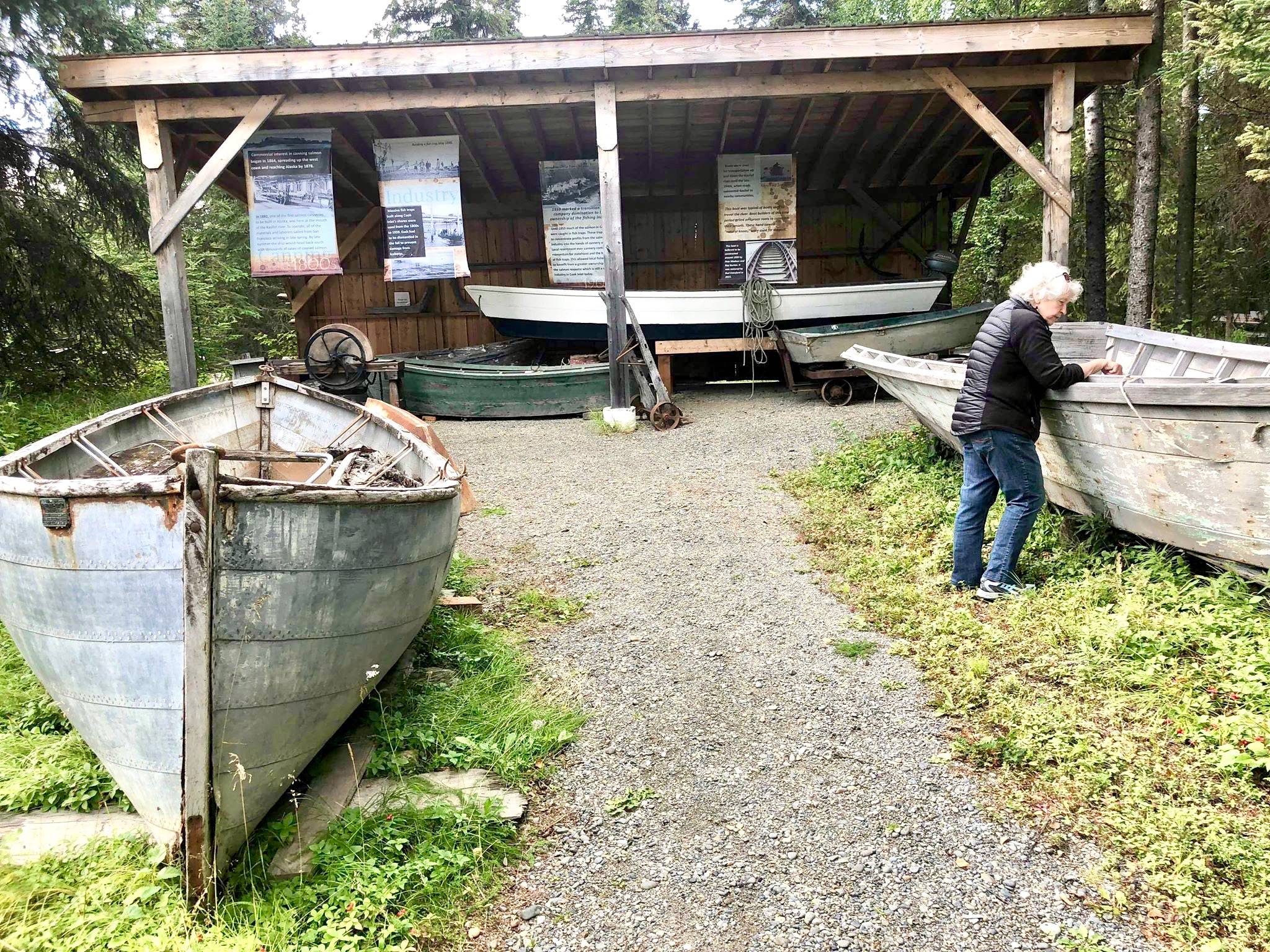In Kasilof, everything revolves around the river. A visit to the Kasilof Historical Museum shows that it’s been that way for thousands of years.
From the early Alaska Native Dena’ina people to the cannery workers, fox farmers and commercial fisherman, the people of Kasilof are reliant on its waterway.
Driving too fast, passersby might miss the museum. It sits near the intersection of Kalifornsky Beach Road and the Sterling Highway and the first thing that greets visitors is an old, rusty road grader sitting near the road. Pulling in, a village of cabins, boats, equipment and other items of historical importance appear out of the foliage.
“The way we are situated here, people drive so fast they don’t see us,” Alicia Morgan, vice president of the Kasilof Regional Historical Association and one of the museum docents, said.
Inside the main building, visitors can sign in and admire artifacts like beaded moccasins made by Dena’ina, ropes made from area roots, salmon cans with colorful vintage labels and more. The main building, called the McLane Center, was originally the infirmary for the Kasilof cannery. Built in 1882, the cannery was the second one built in the state and the first one built in western Alaska.
After it served its purpose for the cannery, the building became a schoolhouse in 1932. Kasilof resident Enid McLane was chosen to be the first teacher. She lived north of the Kasilof River and lived with her children at the school during the week to avoid crossing the river every single day after work. Visitors can read about how McLane had to cross the river in the spring by jumping from one ice chunk to another. When Tustumena School was constructed in 1959, the McLane Center became the community library.
There are eight historic buildings on the grounds, Morgan said. The Watchman’s House is one of the newer additions to the museum. The home was built in 1891 and used until the 1970s. After it was abandoned it was damaged by campers visiting it. In 2009, it was transported by trailer from the mouth of the Kasilof River to the museum to be preserved. Today, people can walk through the home, and other cabins on the grounds, and see what life might have been like at the time of its use.
One of the main attractions of the museum is what has been left behind from Kasilof’s fox farming days. In the 1920s, when the population was only around a dozen people, fox farming was the cash crop of the area. Fox farming has existed in Alaska since Russian colonization, and in Kasilof, the silver black fox was coveted for its look and feel in high fashion. There were seven fox farms along the Kasilof River between 1920 and 1940. Fox farming died out during the Great Depression, but can still be remembered at the museum, where people can peruse cabins and kennels used for the short-lived industry. Visitors can learn about how fencing on the farms had to go deep past the ground level, to keep the fox from escaping.
“The fox were diggers, and if they got away, there went your payday,” Morgan said.
When the museum is open, a small walking trail and outdoor placards help guide curious visitors through the maze of historic buildings. During open hours people can peruse the interior of these buildings, but in the wintertime, visitors can still peek through the windows and into the past.
“It’s more or less the locals’ playground in the wintertime, where people can come in and work on the exhibits,” Morgan said.
Because so many community members change and add exhibits in the wintertime, Morgan said every year the museum is a little bit different than the year before.
Morgan said the museum greets about 600 visitors a year, but that count comes from people that sign in. She said many more come when it’s closed and take the outdoor, self-guided tour. This is the last weekend the museum is open for the season. The museum is open from 1-4 p.m., Tuesday through Sunday, Memorial Day to Labor Day.
Reach Victoria Petersen at vpetersen@peninsulaclarion.com.

